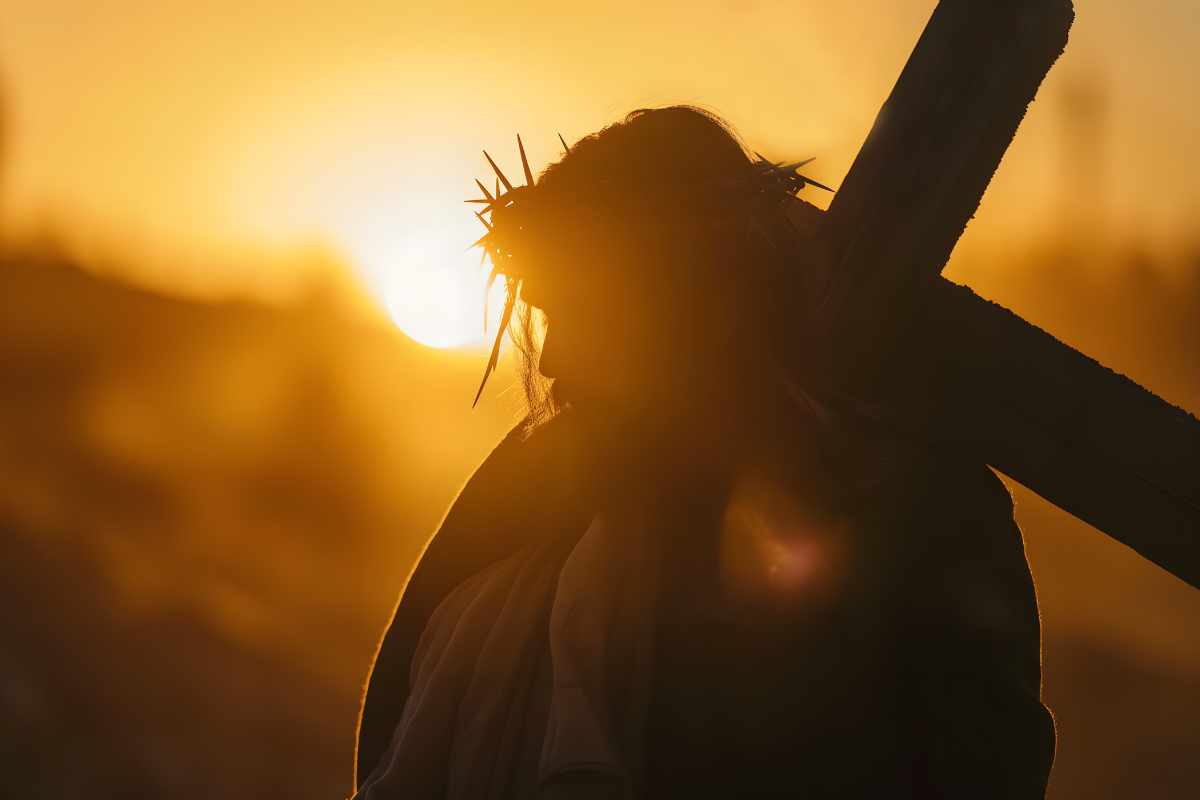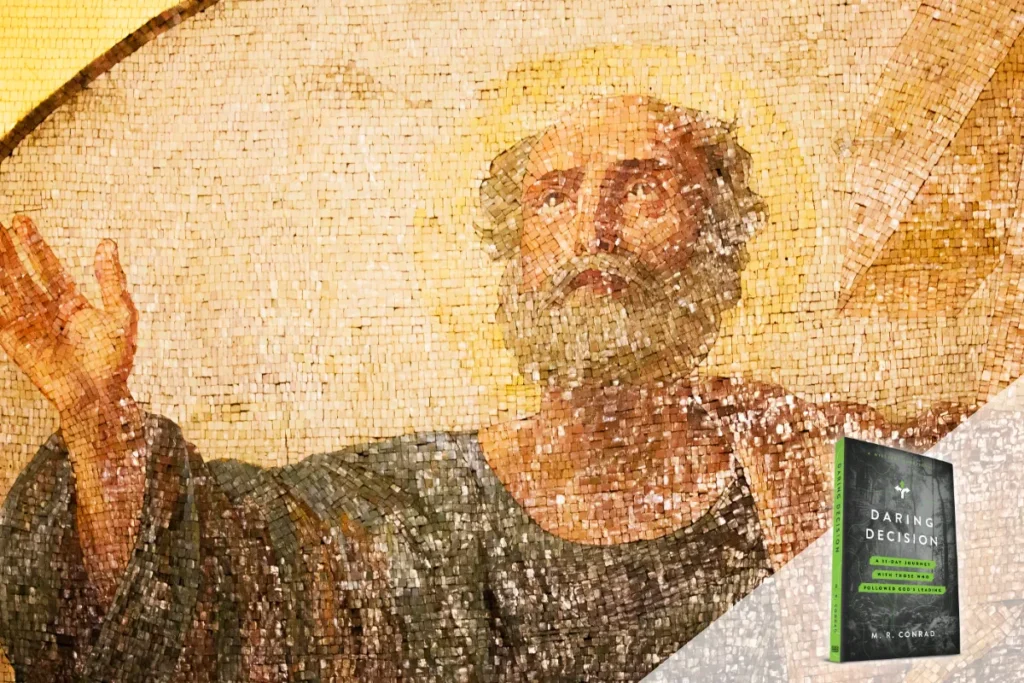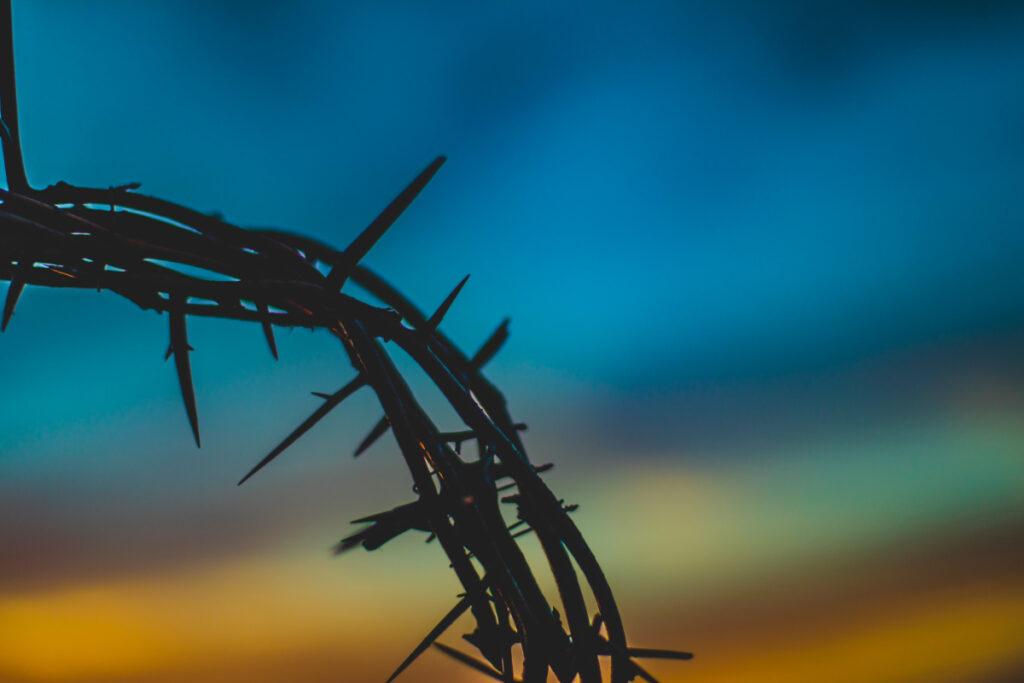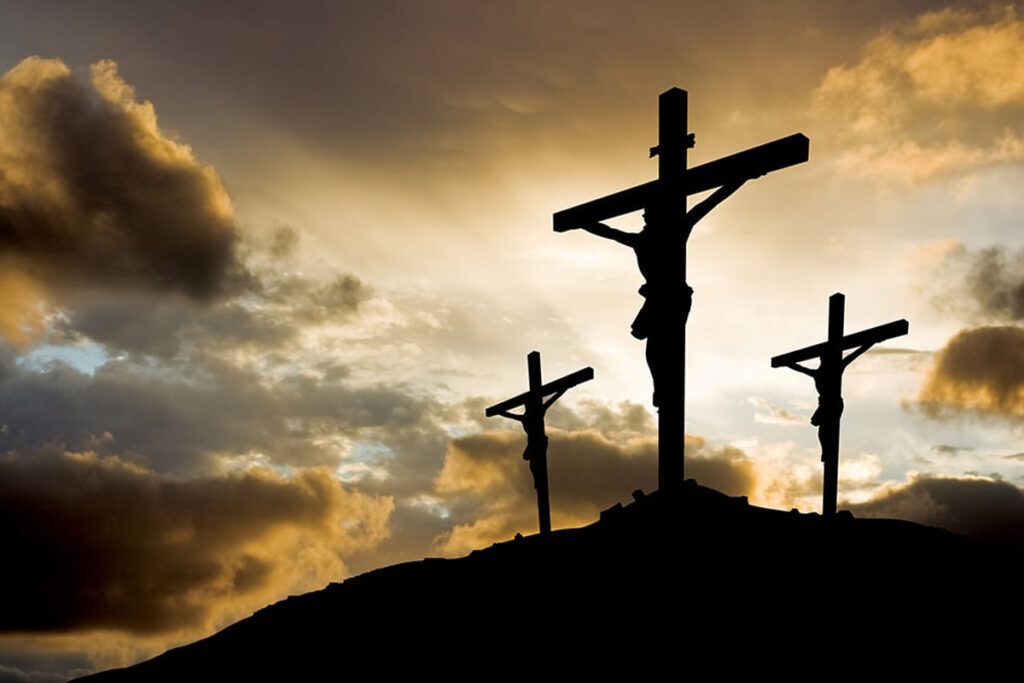
Blog
Jesus’ Journey to Golgotha

Jesus’ Death March
It was customary for the condemned to carry their own crosses. Jesus began to do so, staggering down Jerusalem’s narrow streets. The brutality of the last several hours took its toll, and Jesus succumbed to the weight of the cross, unable to continue. A man named Simon of Cyrene was plucked from the crowd and forced to help Jesus carry His cross. This little assistance only facilitated Jesus’ suffering; each bloody step took Him nearer to Golgotha.
Simon of Cyrene has been the subject of much speculation. He was likely an immigrant to Palestine from Cyrene, modern-day Libya. It is also likely—or at least hoped—that his exposure to Christ on this dreadful day brought him to salvation. Why would John Mark describe Simon as “the father of Alexander and Rufus” unless those men were known to the Christian community (Mark 15:21)? Paul’s greeting sent to a Rufus who lived in Rome, along with his godly mother, adds to the likelihood of this story, though we can’t be certain (Romans 16:13).
The city which had welcomed Jesus with shouts and songs and palm branches now expelled Him.
Jesus’ death march wasn’t long. The winding Via Dolorosa (or Sorrowful Way) in Jerusalem is a short street—only six hundred feet long, approximately two blocks in some of our cities. Its supposed “stations of the cross” are apocryphal. Still, walking that route, even today, is sobering. It is certain that Jesus was forced to stumble from the Praetorium to Calvary, though the precise path cannot be known. But I’ve walked those streets, and it’s not hard to imagine the crowds, the trail of blood, and our exhausted and expiring Savior.
The triumphal entry, less than a week earlier, was a distant memory. The city which had welcomed Jesus with shouts and songs and palm branches now expelled Him. He would die outside of Jerusalem proper, as Jewish laws required (Leviticus 24:14). Hebrews makes much of this fact, that Jesus suffered “outside the camp” (Hebrews 13:11–13), using the phrase as a call for Christians to be willing to be rejected by the culture as they identify with Christ.
Jesus’ Mourners
The four Gospels could give the impression that the entire Jewish population was united in its hatred for the Lord Jesus. But Luke alone describes “a great multitude of the people and of women who were mourning and lamenting for him” (Luke 23:27). Most of these people—some believers, some not—probably awakened to the news that Jesus had been tried and convicted while they slept.
We can imagine them praying that the news was false, rushing into the Jerusalem streets, and witnessing a scene that must have seemed incomprehensible. The kind, compassionate Healer and Teacher—the very One many believed to be their Messiah—was staggering out of the city. Had the mob not been shouting His name, these mourners would not have recognized Him. He was headed for Calvary, and His death was already certain.
Jesus’ Warning
Daughters of Jerusalem, do not weep for me, but weep for yourselves and for your children. For behold, the days are coming when they will say, “Blessed are the barren and the wombs that never bore and the breasts that never nursed!” Then they will begin to say to the mountains, “Fall on us,” and to the hills, “Cover us.” For if they do these things when the wood is green, what will happen when it is dry? (Luke 23:28–31)
That’s a lot, especially considering that Jesus was in the process of dying when He said it—too weary to carry His own cross and likely in shock from the brutalities He had already suffered. The fact that He was so coherent and so compassionate defies understanding.
Jesus was once again reciting Scripture, this time quoting a prophecy of judgment from Zechariah 12:10–14, where the Jews realize they have murdered their own Messiah. Jesus anticipated a time when sinners would be judged rather than rendering perverse judgments.
Remarkably, He described the coming condemnation of the Jews not with relish or a desire for revenge, but with profound sorrow. His words on the Via Dolorosa were the last of several lamentations over Jerusalem (Luke 19:41–44; Matthew 23:37–39), warning these women of the judgment coming to their people. Once again, we are confronted with Jesus’ love for those who abused Him.
The fact that He was so coherent and so compassionate defies understanding.
But we are also struck with the horrific scenes He predicted. He spoke of a time when women without children will be grateful—an absolute turnabout from what is expected, and thus a description of catastrophic troubles. He spoke of a time when people will be praying for the mountains to mercifully put them out of their misery.
He likely was describing the fall of Jerusalem in A.D. 70, an event Josephus depicts in horrific detail (cf. Luke 21:20–24). But Jesus was probably also looking beyond that point—prophesying the final judgment of the wicked. The fact that Revelation 6:16 uses the same imagery of people crying out to the mountains to hide them from the wrath of Christ bolsters this likelihood.
Jesus’ final lines to these ladies are tragic, and a bit difficult to interpret. The likely meaning, I believe, is this: “If they do these things when the wood is green”—if God has allowed such severe judgment to fall on Me, the Innocent—“what will happen when it is dry”—it is certain that God will not spare the wicked who have carried out this evil.
Jesus was urging the sorrowful women to consider their own souls—to believe in Him as Savior, not just to pity Him for His sufferings. To bring back Jesus’ earlier words to His disciples, “Unless you repent, you will all likewise perish” (Luke 13:3, 5).
William Hendriksen summarizes this Luke 23 passage as “an unforgettable manifestation of the Savior’s complete lack of self-pity and of his ardent desire, even now, that the impenitent may repent and be saved.”2
If you’ve not yet turned from your sins to Jesus Christ, now is the time.
READ THE WHOLE BOOK
What if you could step into the final 24 hours before Jesus’ crucifixion and witness His love, suffering, and sacrifice firsthand? Sundown to Sundown is a 31-day devotional that journeys through the most profound day in human history, following Jesus from the upper room to Gethsemane, from Gabbatha to Golgotha. Each meditation unpacks the depth of His words, prayers, and trials, helping believers slow down and behold the wonder of Christ’s love.
[2] William Hendriksen, New Testament Commentary: Exposition of the Gospel According to Matthew (Grand Rapids, MI: Baker Academic, 1978), 1026.













